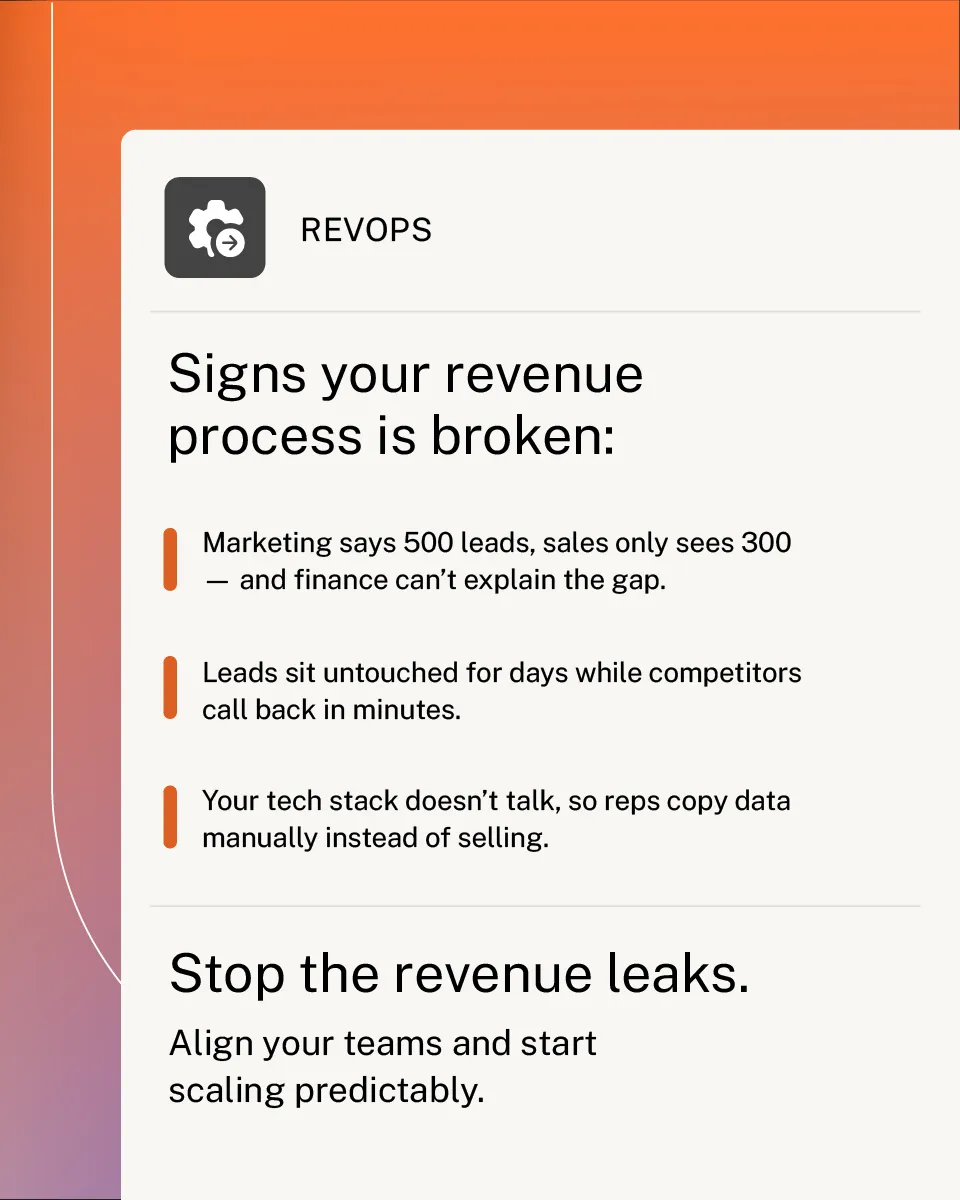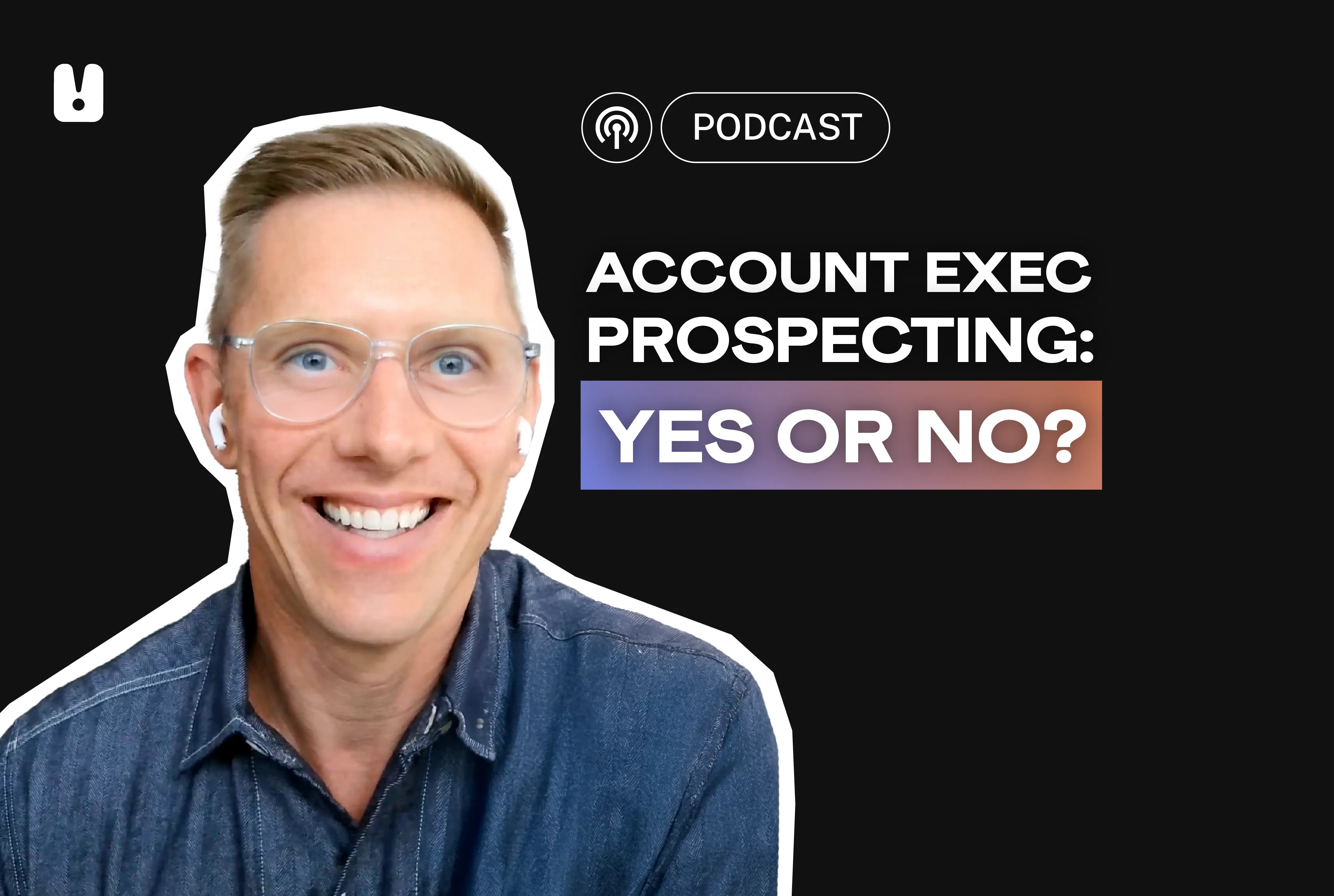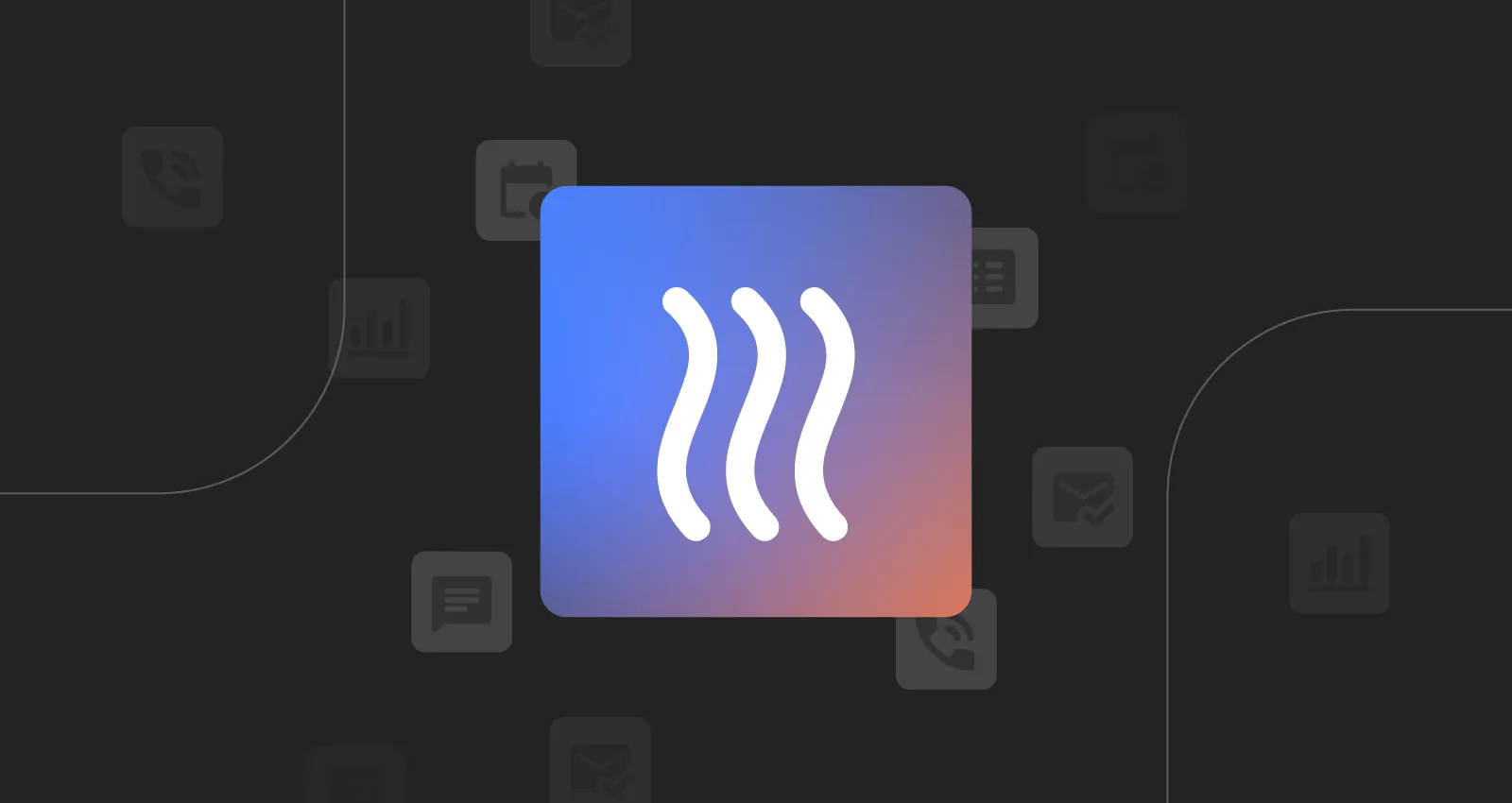

How to Increase SDR Retention Rates
I was having coffee with Mark, a former SDR who'd just handed in his notice at a well-known tech company. Two years of grinding, crushing quotas, and consistently hitting his numbers. The kind of rep any sales leader would kill to keep.
"I'm done," he said, stirring his oat milk latte with the exhaustion of someone who'd been running on fumes for months. "I can't do another day of 100 cold calls just to get hung up on by people who think I'm selling them insurance."
Mark's story isn't unique. It's epidemic.
The average SDR tenure is 1.5 years. That's not a statistic—that's a warning siren that most companies are choosing to ignore while they frantically post job openings and wonder why their pipeline keeps drying up.
But here's what most sales leaders miss: the problem isn't that SDRs are getting soft. The problem is that we're burning through talented people because we've built a system that treats humans like expendable revenue machines.
The Hidden Cost of SDR Churn
Let's talk numbers, because apparently that's the only language C-suite executives understand.
When an SDR quits, you're not just losing a person.
You're losing:
$47,000 in replacement costs (recruitment, onboarding, training, ramp time)
3-6 months of lost productivity while you find and train their replacement
All their pipeline knowledge (those warm prospects they were nurturing? Gone.)
Team morale (nothing kills motivation like watching your best performer walk out)
Last year, I watched a client burn through seven SDRs in eight months. Seven. Their CEO kept asking why their pipeline was inconsistent while spending more on recruitment than they would've on a full outsourced SDR solution.
The math is brutal: if you're replacing SDRs every 1.5 years, you're essentially running a very expensive training academy for your competitors.
Why Traditional SDR Management is Broken
I've been in sales long enough to remember when "smile and dial" was considered cutting-edge strategy.
The traditional SDR model is fundamentally flawed because it treats symptoms, not causes:
The Volume Trap:
"Make 100 calls a day" sounds impressive until you realize it's optimizing for activity, not outcomes. I've seen SDRs hit call targets while generating zero quality conversations. It's like measuring a surgeon's success by how fast they can make incisions.
The Spray-and-Pray Approach:
Give them a list of 10,000 contacts and hope something sticks. This isn't strategy—it's gambling with expensive resources.
The Motivation Mirage:
Pizza parties and leaderboards might work for a month, but they don't address the core issue: SDRs burning out because they're fighting an uphill battle with terrible tools and even worse processes.
The Skills Gap:
Most companies hire SDRs and expect them to figure it out. It's like hiring someone to perform surgery and handing them a butter knife.
Here's what nobody talks about: the best SDRs don't quit because they hate sales. They quit because they hate feeling like failures in a system designed to make them fail.

The Burnout Warning Signs Your HR Team Won't Tell You About
In my experience working with SDRs, I've seen a pattern: the warning signs of burnout are always the same. The scary part? Most managers miss them completely.
The Enthusiasm Death:
Remember how excited your new hire was in week one? If they're going through the motions by month three, you've got a problem. (Side note: if your onboarding process consists of "here's your laptop and your list," you're part of the problem.)
The Question Drought:
Good SDRs ask questions. Lots of them. When they stop asking how to improve, what's working, or why certain approaches matter, they've mentally checked out. They're just waiting for a better offer.
The Excuse Factory:
When previously honest reps start making excuses for missed calls or blown follow-ups, they've lost faith in the process. And once that happens, you've lost them.
The Meeting Decline:
If they're suddenly "too busy" for coaching sessions or team meetings, they're already interviewing elsewhere.
The brutal truth? By the time you notice these signs, it's usually too late. The best SDRs are already three interviews deep with your competitor.
10 Ways Smart Businesses Retain Their SDRs
I've spent a lot of time figuring out what makes some companies great at keeping their SDRs. After seeing what works and what doesn't, here are the 10 strategies that separate the winners from the wannabes
1. Treat SDRs Like Revenue Generators, Not Call Machines
We know that focusing on conversation quality over call quantity is what separates a good sales team from a great one. The difference? SDRs feel like professionals, not telemarketers.
At Punch!, we take this a step further with our data-driven approach to outbound. Our SDRs aren't making cold calls to random lists—they're calling pre-vetted leads through our Priority ABX™ technology. When your reps know they're calling someone who's already showing buying intent, their confidence and conversion rates skyrocket.
2. Recruit, Reward, and Retain on Company Values
Here's what nobody talks about: skills can be taught, but values can't. The best companies hire for cultural fit first, skills second.
We hire, reward, and retain based on core values, not just performance metrics. When someone aligns with your values, they don't just hit targets—they become ambassadors for your mission.
3. Create Clear Career Progression Paths
The best companies don't hire SDRs to stay SDRs forever. They hire future account executives, customer success managers, and sales leaders.
HubSpot nailed this early with their clear 18-month progression path from SDR to Account Executive, complete with skills assessments and guaranteed promotion opportunities.
At Punch!, every employee gets an established career journey showing exactly how they can progress. No guesswork, no politics—just clear milestones and development opportunities.
Our average SDR tenure of 2 years proves this works.
4. Invest in Technology That Makes SDRs Superhuman
This isn't about buying the latest shiny tool. It's about strategic technology investment that amplifies human capability.
Our SDRs have access to top technology, including Orum Salesfloor integration for real-time coaching and continuous development.
If your SDRs are spending more than 30% of their time on administrative tasks, you're wasting their talent and your money.
5. Implement Dedicated Coaching Programs
Most companies think a monthly team meeting counts as coaching. It doesn't.
We provide regular coaching sessions (2 per week minimum) combined with our Pod system structure—every client success manager has a dedicated sales development manager with their own SDR team. No one gets lost in the crowd.
6. Create Internal Training and Development Programs
Generic sales training is like using a butter knife for surgery—technically it's a tool, but it won't get the job done.
Our SDR Academy provides specific training and certifications created internally, complete with videos, exercises, and quizzes tailored to our methodology and client needs. When SDRs master skills that are directly applicable to their daily work, they see immediate results.
7. Run with Transparency and Clear Vision
Nothing kills motivation faster than feeling like you're working in the dark.
We run on EOS (Entrepreneurial Operating System), which means complete transparency around vision and traction. Everyone knows where we're going, how we're getting there, and exactly how their role contributes to the bigger picture.
8. Put Former SDRs in Management Roles
Here's a controversial take: most SDR managers have never been SDRs. They're managing a job they've never done.
Our managers have mainly all been SDRs, so they have real context to lead. They've been hung up on, dealt with rejection, and know what it takes to succeed. This isn't theory—it's lived experience.
9. Make Work Fun with Regular Games and Incentives
SDR work can be tough. If you're not actively making it engaging, you're part of the problem.
We implement regular games and incentives that go beyond basic leaderboards. Our MVP Club gives everyone in the company an equal chance to earn points—the top 10 team members every year get a fully expensed trip.
10. Align Financial Incentives with Success
Here's what most companies get wrong: they pay SDRs to show up, not to succeed.
We've implemented a commission structure that incentivizes SDRs when they exceed goals. It's not just about base salary—it's about rewarding excellence and making top performers feel valued.
Why Punch! Exists (And Why It Matters for Your Business:
We started Punch! because we got tired of watching talented SDRs burn out in broken systems. We built a company around a simple premise: what if SDRs had every possible advantage?
Advanced technology, continuous training, clear career paths, and the support of a team that's refined this process across hundreds of successful campaigns.
But here's what I'm most proud of: our SDRs don't burn out. They level up.
The companies that will win the next decade of B2B growth are those that stop trying to do everything in-house and start partnering with specialists who can deliver unfair advantages.
Your SDRs deserve better than a system designed to burn them out. Your business deserves better than the status quo tax.
The question isn't whether the current system is broken. The question is: how long are you willing to pay the price for ignoring it?
The Bottom Line
The SDR burnout epidemic isn't going away. It's getting worse as competition for talent increases and buyer behavior becomes more complex.
You have two choices:
Option 1: Keep doing what you're doing. Keep hiring, training, and losing good people. Keep wondering why your pipeline is inconsistent and your costs keep rising.
Option 2: Partner with specialists who've solved this problem. Get guaranteed results, predictable costs, and access to technology and expertise that would take years to build internally.



“I am passionate about empowering the team to deliver great work and brilliant results across the business”
I was having coffee with Mark, a former SDR who'd just handed in his notice at a well-known tech company. Two years of grinding, crushing quotas, and consistently hitting his numbers. The kind of rep any sales leader would kill to keep.
"I'm done," he said, stirring his oat milk latte with the exhaustion of someone who'd been running on fumes for months. "I can't do another day of 100 cold calls just to get hung up on by people who think I'm selling them insurance."
Mark's story isn't unique. It's epidemic.
The average SDR tenure is 1.5 years. That's not a statistic—that's a warning siren that most companies are choosing to ignore while they frantically post job openings and wonder why their pipeline keeps drying up.
But here's what most sales leaders miss: the problem isn't that SDRs are getting soft. The problem is that we're burning through talented people because we've built a system that treats humans like expendable revenue machines.
The Hidden Cost of SDR Churn
Let's talk numbers, because apparently that's the only language C-suite executives understand.
When an SDR quits, you're not just losing a person.
You're losing:
$47,000 in replacement costs (recruitment, onboarding, training, ramp time)
3-6 months of lost productivity while you find and train their replacement
All their pipeline knowledge (those warm prospects they were nurturing? Gone.)
Team morale (nothing kills motivation like watching your best performer walk out)
Last year, I watched a client burn through seven SDRs in eight months. Seven. Their CEO kept asking why their pipeline was inconsistent while spending more on recruitment than they would've on a full outsourced SDR solution.
The math is brutal: if you're replacing SDRs every 1.5 years, you're essentially running a very expensive training academy for your competitors.
Why Traditional SDR Management is Broken
I've been in sales long enough to remember when "smile and dial" was considered cutting-edge strategy.
The traditional SDR model is fundamentally flawed because it treats symptoms, not causes:
The Volume Trap:
"Make 100 calls a day" sounds impressive until you realize it's optimizing for activity, not outcomes. I've seen SDRs hit call targets while generating zero quality conversations. It's like measuring a surgeon's success by how fast they can make incisions.
The Spray-and-Pray Approach:
Give them a list of 10,000 contacts and hope something sticks. This isn't strategy—it's gambling with expensive resources.
The Motivation Mirage:
Pizza parties and leaderboards might work for a month, but they don't address the core issue: SDRs burning out because they're fighting an uphill battle with terrible tools and even worse processes.
The Skills Gap:
Most companies hire SDRs and expect them to figure it out. It's like hiring someone to perform surgery and handing them a butter knife.
Here's what nobody talks about: the best SDRs don't quit because they hate sales. They quit because they hate feeling like failures in a system designed to make them fail.

The Burnout Warning Signs Your HR Team Won't Tell You About
In my experience working with SDRs, I've seen a pattern: the warning signs of burnout are always the same. The scary part? Most managers miss them completely.
The Enthusiasm Death:
Remember how excited your new hire was in week one? If they're going through the motions by month three, you've got a problem. (Side note: if your onboarding process consists of "here's your laptop and your list," you're part of the problem.)
The Question Drought:
Good SDRs ask questions. Lots of them. When they stop asking how to improve, what's working, or why certain approaches matter, they've mentally checked out. They're just waiting for a better offer.
The Excuse Factory:
When previously honest reps start making excuses for missed calls or blown follow-ups, they've lost faith in the process. And once that happens, you've lost them.
The Meeting Decline:
If they're suddenly "too busy" for coaching sessions or team meetings, they're already interviewing elsewhere.
The brutal truth? By the time you notice these signs, it's usually too late. The best SDRs are already three interviews deep with your competitor.
10 Ways Smart Businesses Retain Their SDRs
I've spent a lot of time figuring out what makes some companies great at keeping their SDRs. After seeing what works and what doesn't, here are the 10 strategies that separate the winners from the wannabes
1. Treat SDRs Like Revenue Generators, Not Call Machines
We know that focusing on conversation quality over call quantity is what separates a good sales team from a great one. The difference? SDRs feel like professionals, not telemarketers.
At Punch!, we take this a step further with our data-driven approach to outbound. Our SDRs aren't making cold calls to random lists—they're calling pre-vetted leads through our Priority ABX™ technology. When your reps know they're calling someone who's already showing buying intent, their confidence and conversion rates skyrocket.
2. Recruit, Reward, and Retain on Company Values
Here's what nobody talks about: skills can be taught, but values can't. The best companies hire for cultural fit first, skills second.
We hire, reward, and retain based on core values, not just performance metrics. When someone aligns with your values, they don't just hit targets—they become ambassadors for your mission.
3. Create Clear Career Progression Paths
The best companies don't hire SDRs to stay SDRs forever. They hire future account executives, customer success managers, and sales leaders.
HubSpot nailed this early with their clear 18-month progression path from SDR to Account Executive, complete with skills assessments and guaranteed promotion opportunities.
At Punch!, every employee gets an established career journey showing exactly how they can progress. No guesswork, no politics—just clear milestones and development opportunities.
Our average SDR tenure of 2 years proves this works.
4. Invest in Technology That Makes SDRs Superhuman
This isn't about buying the latest shiny tool. It's about strategic technology investment that amplifies human capability.
Our SDRs have access to top technology, including Orum Salesfloor integration for real-time coaching and continuous development.
If your SDRs are spending more than 30% of their time on administrative tasks, you're wasting their talent and your money.
5. Implement Dedicated Coaching Programs
Most companies think a monthly team meeting counts as coaching. It doesn't.
We provide regular coaching sessions (2 per week minimum) combined with our Pod system structure—every client success manager has a dedicated sales development manager with their own SDR team. No one gets lost in the crowd.
6. Create Internal Training and Development Programs
Generic sales training is like using a butter knife for surgery—technically it's a tool, but it won't get the job done.
Our SDR Academy provides specific training and certifications created internally, complete with videos, exercises, and quizzes tailored to our methodology and client needs. When SDRs master skills that are directly applicable to their daily work, they see immediate results.
7. Run with Transparency and Clear Vision
Nothing kills motivation faster than feeling like you're working in the dark.
We run on EOS (Entrepreneurial Operating System), which means complete transparency around vision and traction. Everyone knows where we're going, how we're getting there, and exactly how their role contributes to the bigger picture.
8. Put Former SDRs in Management Roles
Here's a controversial take: most SDR managers have never been SDRs. They're managing a job they've never done.
Our managers have mainly all been SDRs, so they have real context to lead. They've been hung up on, dealt with rejection, and know what it takes to succeed. This isn't theory—it's lived experience.
9. Make Work Fun with Regular Games and Incentives
SDR work can be tough. If you're not actively making it engaging, you're part of the problem.
We implement regular games and incentives that go beyond basic leaderboards. Our MVP Club gives everyone in the company an equal chance to earn points—the top 10 team members every year get a fully expensed trip.
10. Align Financial Incentives with Success
Here's what most companies get wrong: they pay SDRs to show up, not to succeed.
We've implemented a commission structure that incentivizes SDRs when they exceed goals. It's not just about base salary—it's about rewarding excellence and making top performers feel valued.
Why Punch! Exists (And Why It Matters for Your Business:
We started Punch! because we got tired of watching talented SDRs burn out in broken systems. We built a company around a simple premise: what if SDRs had every possible advantage?
Advanced technology, continuous training, clear career paths, and the support of a team that's refined this process across hundreds of successful campaigns.
But here's what I'm most proud of: our SDRs don't burn out. They level up.
The companies that will win the next decade of B2B growth are those that stop trying to do everything in-house and start partnering with specialists who can deliver unfair advantages.
Your SDRs deserve better than a system designed to burn them out. Your business deserves better than the status quo tax.
The question isn't whether the current system is broken. The question is: how long are you willing to pay the price for ignoring it?
The Bottom Line
The SDR burnout epidemic isn't going away. It's getting worse as competition for talent increases and buyer behavior becomes more complex.
You have two choices:
Option 1: Keep doing what you're doing. Keep hiring, training, and losing good people. Keep wondering why your pipeline is inconsistent and your costs keep rising.
Option 2: Partner with specialists who've solved this problem. Get guaranteed results, predictable costs, and access to technology and expertise that would take years to build internally.














